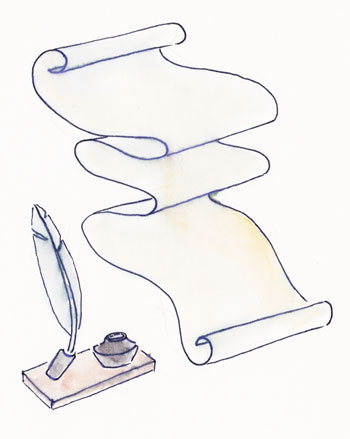This UXmas I am sharing with you my “12 Days of UXmas” list of things I wish for in the UX field. I encourage you to think about what might be on your list. It’s a great way for you to reflect on what we’ve all been doing, and start the conversation around making the UX field the best it can be.

1. All I want for UXmas is U
The field of UX has been lacking a broader definition of “user” for some time. For too long we have assumed that the end user is the only user we serve. This would be logical if we worked for ourselves, but we don’t—we work for clients and companies, and with teams of various skill disciplines. By focusing only on the end user, we forget about our business user, our technology user, and any other user whose processes and knowledge can help make our products and services better. If we include all of these people as our users where appropriate, our roles in organizations would shift dramatically, and our work relationships would improve too.
2. Keep it real
It’s important for UXers to talk about real life situations and processes as much as (if not more than) the ideal way that companies with great brands and a lot of money espouse. All too often, we see presentations about new methodologies and ideal situations—which is a great way for us to be creative and learn more—without realising that these methodologies and situations don’t relate to most of our real-life professional lives. Many of us are becoming less confident in our ability to “do UX” correctly. We need to be keeping it real about what “doing UX” in the real world means. It means being flexible, creative, and solving problems (both digital and non-digital) by utilizing methods derived from user-centered design, and we don’t always have to follow a process step by step in order to “do UX” correctly.
3. Show more of our actual work, rather than simply talk about what we do
Many of us seem bound by creative laws of the land that mandate we don’t ever show anyone our work. However, UX will only graduate to the next level of becoming a concrete profession once we start sharing what we do. I’m talking about showing examples of what we have actually done, or putting together case studies of projects we’ve worked on, and what we have learned from them. It will provide our co-UXers insight into what to do and what not to do in certain situations. By being more transparent, UX becomes less of a dark art, and more of a respected industry.
4. Create more focus in existing UX conferences
We are all lucky to be a part of an industry that loves to learn. We have more conferences than most industries, but most of them aren’t focused enough for us to come away with actionable next steps. I would love to see conferences, new and old, focus their content either by skill level (for the beginner, intermediate, advanced) or by topic (UX in corporations or UX, the first year). As the industry matures, we need to curate a profession that grows and learns, and a community that doesn’t just come together every few months. We are not yet in the position of having widely available college and high school curriculums for user experience, so we must create our own methods of learning.
5. Start educating those that come after us
For those of us who are more experienced in the UX field, let’s educate new UXers. They may be people looking to get into UX but can’t get their big break, or those who we see have potential in UX but who don’t know that UX as an industry even exists. Either way, we need to develop those that will take over this profession when we are no longer a part of it. We can mentor people or provide apprenticeships and internships for those that need them. Over all, we need to step into education roles if we want UX to have the future we have all been fighting for.
6. Step up into leadership roles…what a UXmas treat!
It’s time folks—time for UXers to step up into leadership roles. UX is only going to be respected as a profession once we create roles that serve not only the interface, but also the business. This is hard to do in many organizations because we believe no one wants to listen to us or that we have no control (which is sometimes the case), but we must figure out ways to command that control and respect. It’s not just the UX gods that can be leaders in this world—it’s you, too!

7. Work better with non-UXers
I believe a healthy dose of self-reflection is needed for UXers to see that we are NOT always right. It’s about taking the time to realize that our processes are not always the best, nor are they the only way to achieve a great experience for our users. We have been siloed in our own thoughts and processes for too long. Many of us have become UX snobs instead of empathetic co-workers and partners. This UXmas, take a step back, better understand, listen to, and have respect for all of those we work with—whether they “get” UX or not.
8. Kill the wireframe machine!
Ah the wireframe machine—that construct that we have been working within, where the interface is king and true experience design is impossible. I’ve talked a lot about Killing the Wireframe Machine (see The Future of UX: Killing the Wireframe Machine), but have not seen many attempts to actually kill it. As UXers, we often feel like victims to those who don’t “get” UX and thus force us, hands tied to our keyboard and mouse, to draw and deliver wireframes. In all honesty, nobody is forcing us. How is it that we are being forced to produce wireframes or sketches of interfaces when it isn’t necessary? Furthermore, how are we being forced to define the interface as the only real UX output? In short, we aren’t. UXers needs to step up to start to kill the wireframe machine, or it will never die.
9. Stop grasping at trends, and instead understand our core value
“Service design—that is where the really cool work is.” “Lean UX—that is what is going to change our profession for the better!” I hear these statements and think that although these trends are in and of themselves great ways to adapt and change our thinking, dropping a trend name isn’t going to make UX your dream career overnight. One of the biggest UX epidemics is grasping to new or different terms to find our way. From my point of view, this is a HUGE problem for UXers, and one that we need to address immediately. My fear is that if we all run from trend to trend in hopes of salvation, we are not taking the time to understand the real core value of User Experience and the insight that we provide. Instead, we read up on the newest way to “do UX”, and we count on that to get us to the next really cool UX job at the hottest UX agency. This UXmas I’d like us to go inside of UX and dig up the core of why it exists in the first place. That core will never change, and once you are aligned with it, you’ll be in UXtopia.
10. Start selling UX for the “whys” instead of the “hows”
I would like to see UX selling itself for the value it brings instead of the outputs it creates (Want to Sell UX? Stop Talking UX!). Too often we try to sell outputs (the “how”)—personas, customer journeys, user-flows and post-it notes on whiteboards—rather than the value (the “why”)—user behavior insights that generate higher profits, more customer loyalty and higher value for our companies. The value that we can provide businesses with our user-centered approach is huge. Let’s start focusing on describing those whys, and leave the hows for backstage.
11. Appreciate that UX isn't the world
Listen to Whitney Hess in her 2010 IA Summit closing plenary and start to “Transcend Our Tribe”. This means that we stop seeing UX as the center of everything, and start considering it as part of a greater whole—a better whole. Without all of those around us, our work will never get to those people whose lives we are trying to enhance.
12. And finally, for UXmas I would like us to think about why UX exists
Once you have an answer for why UX exists, think about whether or not your motivation for being in this field is in alignment with it. For me the reason is easy—UX exists to make peoples’ experiences with all types of products and services (digital, analog, long, short) better. UX enhances peoples’ lives and solves problems along the way. This is the reason I do the work that I do. It is my center. This UXmas I’d like for each of you to find your center and to go forth into the world promoting that meaning. By doing this, UX could be called service design, information architecture, interface design, rotten tomatoes, it could be called anything and it wouldn’t matter. We may never define it, but we don’t have to as long as we define it for ourselves. That way we’ll always know why we do what we do, so that we can do it better each day.
Some of these are easy fixes, some of them are more challenging, but hopefully I’ve started the conversation around a better world for UX in 2014. It’s been a great year, and I look forward to seeing what some of you have on your UXmas wishlist.
Merry UXmas to all, and to all a good night!
Illustrations by Matthew Magain

